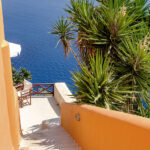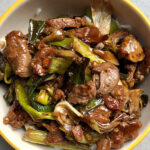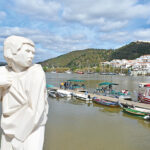Much has been written about the Algarve region’s wines by others more qualified than myself, but what has interested me is discovering what has made the difference. Why are some now winning awards? Why is there still some degree of stigma surrounding their quality, and why are there still many people who don’t even know wines are produced here – seriously!
WORDS Bob Tidy PHOTOGRAPHY Bob Tidy
If I am honest, the wines produced in the Algarve around a decade ago weren’t very good, and that is being polite about it. Fortunately, times have changed. Progress has been made, and many of the wines available in our local wineries (adegas) are compatible in quality with those of other regions throughout Portugal.
It was 7.30 in the morning at the beginning of a hot August day. With clippers in hand, I looked down the first row of vines into the distance. The next few days proved to be a genuine introduction to the hard reality of harvesting grapes. Believe me, there is nothing romantic about it. In that sense, not much has changed over the centuries; the sun still ripens the grapes that are still hand-picked at just the critical time. They are sent for processing and the extracted grape juice is fermented into wine. In principle, winemaking is a simple process, but to understand the evolution from the old times to the contemporary practices is far more complex, much like today’s multi-character, blended wines.


I am back at the adega, Quinta da Tôr, to meet up with their winemaker Pedro Mendes. This time my clippers are replaced with my notebook and a camera. If we go back to the 50s and 60s, he explains, the problem was that wines were produced by cooperatives. We need to remember that back in these times (during the dictatorship period that ended in 1974) the Algarve was nothing like it is today. There was little infrastructure outside of the towns, no real tourism and rural families and village communities lived off the land, sharing their produce. Like most of the region’s agricultural produce, wine was made with the objective of feeding the local population. I can clearly remember buying the old green five-litre bottles called garrafas.
Quantity before quality was the formula and a reflection of the right-wing politics of these times. Whilst there is no doubt that the cooperatives (one of which still exists) contributed to the welfare of the local communities, it also meant that they had no control in developing their own wine’s character and quality. It took the revolution to give them the opportunity to manage their own production and to take advantage of the new opportunities for much-needed research, education, and land development.
Another hindrance to progress was a traditional outlook, or, to put it another way, stubbornness and reluctance to change. While other regions of the country made rapid progress, the Algarve got left behind and continued with outdated technologies. Fortunately, there were pioneers and investors who realised the opportunity for development. Also, the children of these traditional families, such as Pedro, took up the challenge to start making improvements.
After gaining his degree and learning his trade working in such famous institutions as Quinta do Carmo in Estremoz, Pedro is now the principal winemaker at Quinta da Tôr and other wineries across the Algarve. During our relaxed conversation, I was educated on the meaning of the codes printed on the wine barrels and the difference between French or American wood types used to make them. It became apparent that the devil really does lie in the detail. Details like the tightness of wood rings, the degree of toasting on the inside of the oak barrels, the levels of oxygen and sulphur and the nature of the soil. All of these have important influences on the quality of the wine. This level of training, experience, and absolute dedication to a craft has fuelled the change and reversed the equation of the past. Quality now comes before quantity.

While testing a reserva in the making, Pedro uses his intuitive knowledge of the wine’s progress by mentally comparing it to a previous tasting. With a smile, he shares a lesson he learned in his earlier days: making wine is easy, it’s just the first 100 years you need to watch out for.
The final factor concerns regulation and certification. With the demarcation of the five wine regions in 1980 and the formation of the (CVA) Comissão Vitivinícola do Algarve, which is accredited to the (IPCA) Portuguese Institute of Accreditation, structures were implemented to guarantee the genuineness and quality of the wines. Various initiatives over the years have led to an increase in the number of vineyards and producers and, most importantly, in gaining recognition and building a good reputation. Algarve winemaking is still a work in progress.
Leaving the winery with the taste of a very good Aragonez 2017 on my palate, my mind slipped back to working in the fields alongside men and women who have lived their entire lives in this often unforgiving countryside. Like some of the vines that date back many centuries, the culture here goes back for generations of country people who have genuine pride in their work and a real desire to share the fruits of their labour. I have chosen to accept it, and my previous feeling of disappointment has changed to one of appreciation, with a touch of surprise.
Naturally, we must all be our own judges and decide for ourselves, but if there is just one word I can conclude with to suggest how today’s Algarve wines should be treated, it would be – seriously.













